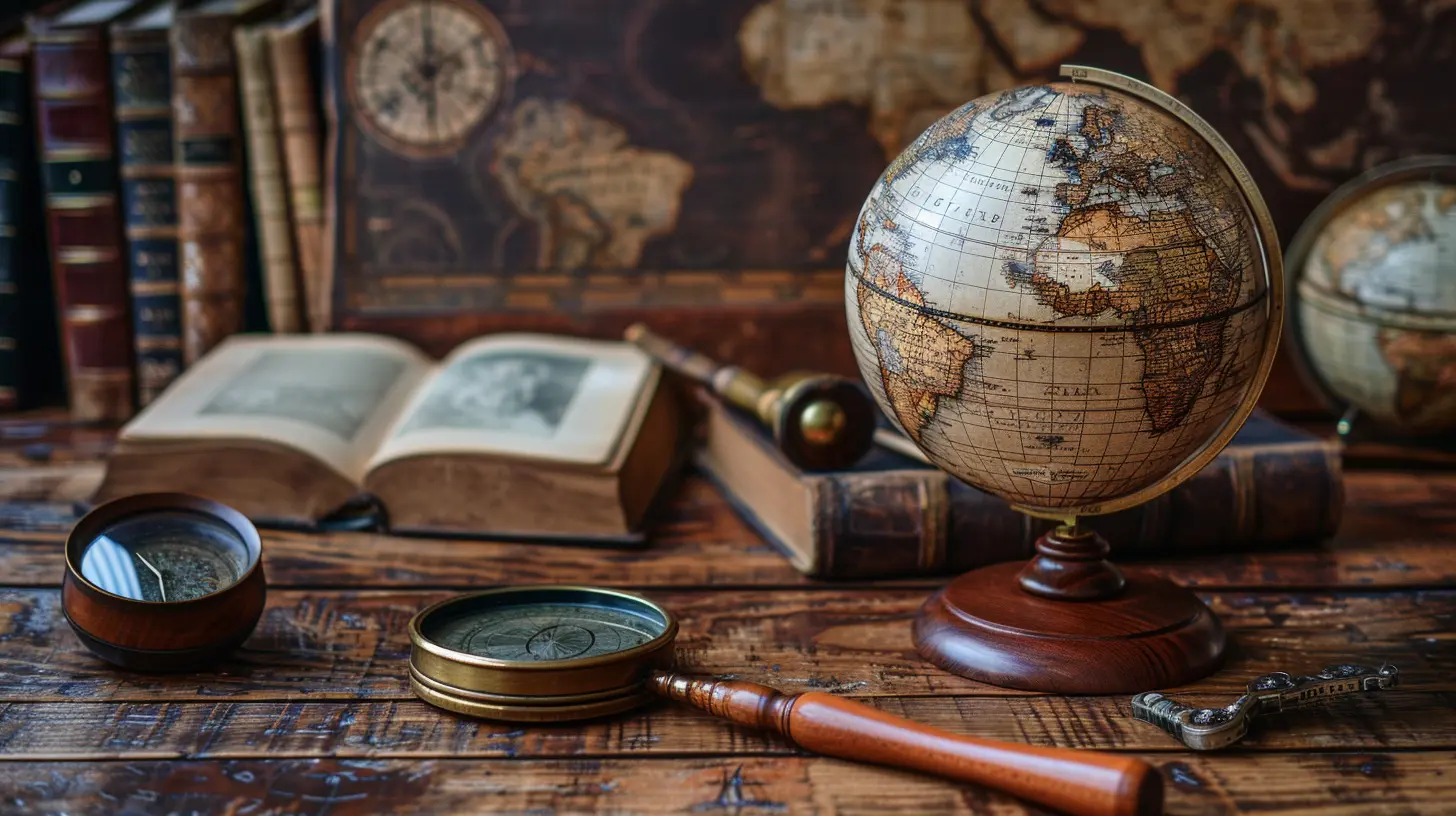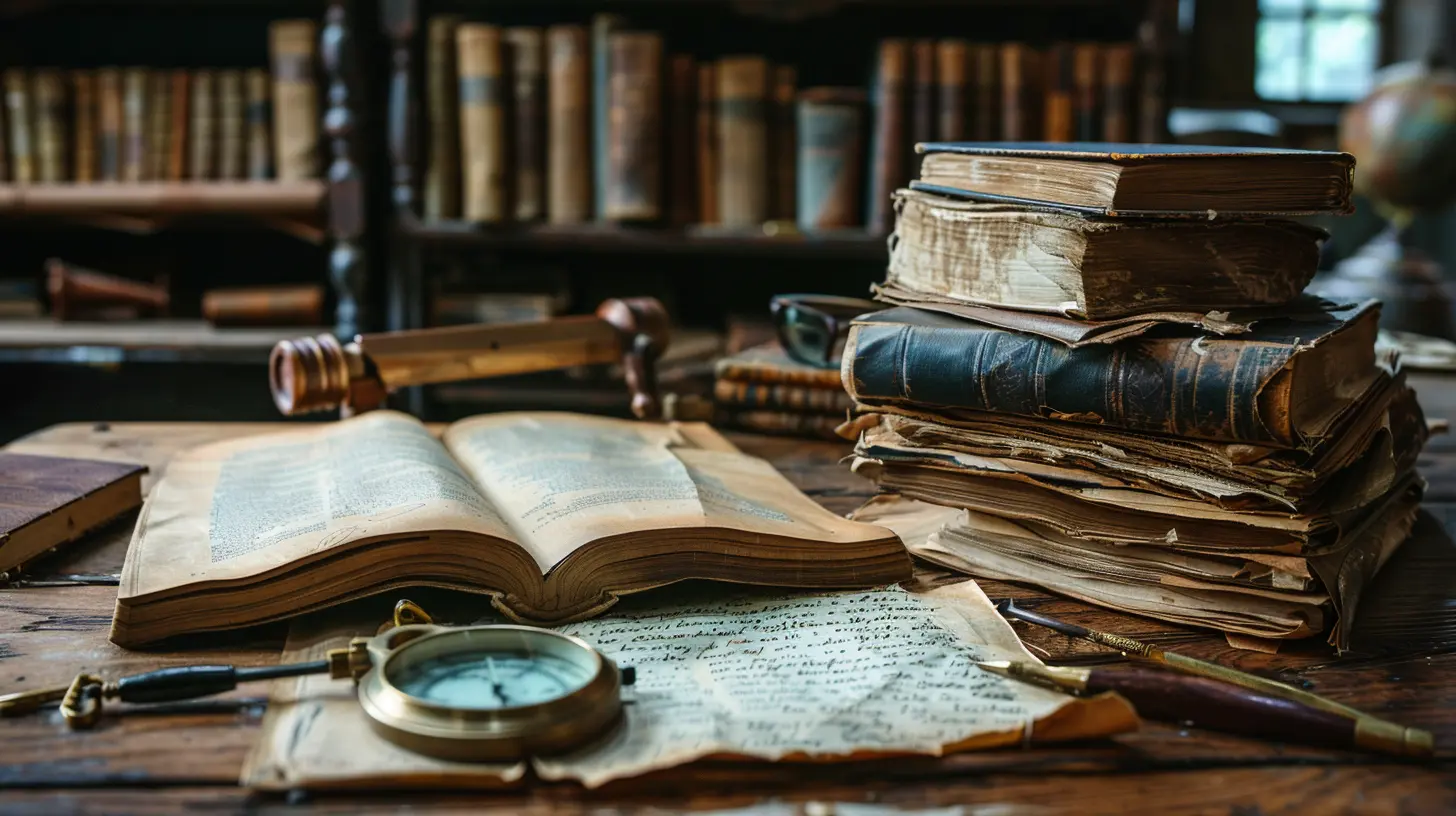13 November 2025
Let’s take a quick trip back in time—but not just any trip. We’re not hopping into a dusty textbook or fast-forwarding through a black-and-white documentary. Nope. We’re diving into the thrilling, mysterious, sometimes messy world of teaching history through a fresh, curiosity-driven lens: historical inquiry and perspective taking.
If you’re a teacher (or someone who just geeks out over good teaching), you know lesson planning can feel like trying to put together IKEA furniture—in another language. But when your goal is to help students not only understand history but feel it, question it, and connect with it—that’s a whole new level of challenge.
The good news? It’s also a lot more fun. So, buckle your metaphorical seatbelt. We’re going to map out how to build engaging, perspective-rich history lessons that spark questions, curiosity, and empathy.
What on Earth is Historical Inquiry?
Alright, before we get too deep, let’s clear up what we mean by historical inquiry.Historical inquiry is more than just asking, “What happened in 1776?” (Though shoutout to the Declaration of Independence.) It’s about diving beneath the surface to ask deeper questions like:
- Why did it happen?
- Who was affected?
- What were the different viewpoints?
- What might have happened if things went differently?
Think of it like being a historical detective. Students examine sources, gather evidence, and try to piece together the human stories behind the events. They’re not passive readers—they're investigators.
And What’s This “Perspective Taking” Business?
Perspective taking is where the magic really happens. It’s having students look at events through the eyes of the people who lived them.Imagine teaching the American Revolution. Now imagine students analyzing the same event from a colonial farmer’s point of view, a British soldier’s, and maybe a Native American watching these two groups go at it while thinking, “None of this bodes well for me.”
This isn’t just role-playing for kicks (though it is fun). It’s about building empathy, critical thinking, and a nuanced understanding of the past. We’re not just teaching dates—we’re teaching humanity.
Why Should We Bother with Historical Inquiry and Perspective Taking?
Honestly? Because we’ve all sat through dry history lessons that made watching paint dry look thrilling.But more importantly:
- It’s engaging: Kids love solving puzzles. Historical inquiry taps into that.
- It builds critical thinking: Instead of memorizing facts, students analyze and evaluate them.
- It fosters empathy: Perspective taking encourages them to understand people who lived in different times and cultures.
- It connects the past to the present: Suddenly, history feels relevant.
Step-By-Step: Crafting an Inquiry-Based, Perspective-Rich History Lesson
Now that we're sold on the why, let’s dig into the how. Because good intentions won't save us from that dreaded blank lesson plan template.1. Start With a Big, Juicy Question
Every great inquiry begins with a question—not one they can Google in five seconds, but one that makes them think.🧠 Think:
- “Was the American Revolution truly revolutionary?”
- “Did the Industrial Revolution improve life for everyone?”
- “How should we remember controversial historical figures?”
These are complex, open-ended, and encourage debate. They demand perspective taking.
💡 Pro Tip: Phrasing matters. “To what extent…” or “How might we view…” are gold mines.
2. Choose Sources That Spark Curiosity (And Argument)
The textbook is fine and dandy, but a good inquiry lesson goes beyond that.You want primary sources—letters, speeches, images, diary entries, ads, even songs. The more varied, the better. Think historical Instagram feed, not encyclopedia entry.
Give students conflicting accounts and let them wrestle with the contradictions. That’s where the learning lives.
🎯 Tip: Mix it up. Include voices that are often left out—women, indigenous people, enslaved people, common folk. History wasn’t just written by the victors, even if the textbooks sometimes suggest otherwise.
3. Teach Source Analysis Like It’s a Superpower (Because It Is)
Don’t just plop a source in front of them and say “analyze this.” The historical reading muscle needs training!Guide them through:
- Who created this?
- Why might they have done so?
- What’s the context?
- Who’s missing from the picture?
Rubrics and graphic organizers can help here. Or better yet—anchor charts they make themselves. Make them feel like historians, not history tourists.
4. Design Activities That Let Students Be the Historians
Here’s where we move from “learning history” to “doing history.” Students can:- Reconstruct events using primary sources.
- Write diary entries or letters from a historical figure’s POV.
- Debate policy decisions using historical evidence.
- Create museum exhibits or podcasts.
- Hold a mock trial using historical evidence.
Hands-on, minds-on. It’s more effective than just taking notes—and way more memorable.
5. Make Perspective Taking a Priority
This isn’t a side dish—it’s the main course. To deeply understand history, students need to grapple with multiple viewpoints.How? Try:
- Role play: Assign roles from different backgrounds. Let students speak “in character.”
- “Walk in their shoes” writing: Students write from another person’s perspective.
- Perspective journaling: How would a person feel about a certain event?
The goal isn’t to justify every action—it’s to understand why people thought and acted the way they did. Even (especially) when we don’t agree.
6. Guide Discussion, Then Get Out of the Way (Mostly)
Nothing kills curiosity like a lecture. Once students have some background knowledge and evidence, let them talk. Encourage those rich, thoughtful classroom discussions that make you want to hit record.Use Socratic seminar, fishbowl, or good ol’ fashioned partner chats. Prompt them with questions like:
- “Whose voice is missing?”
- “What biases might be at play?”
- “How could someone else see this differently?”
Just make sure to set the groundwork for respectful debate. Empathy is key.
7. Wrap It Up With Reflection and Real-World Connections
After all the digging and debating, help students reflect on what they’ve uncovered.You want them to think about:
- What perspectives they hadn’t considered before.
- How their thinking changed.
- How this connects to issues today.
Have them write it out, talk it out, or even create something (a TikTok, a poem, a meme?) that captures what they’ve learned. History isn’t just about the past—it’s a lens for the present.
Real Talk: What About Standards and Assessments?
Good question. Don’t worry—this stuff does align with standards.Historical inquiry hits:
- Analyzing primary and secondary sources
- Explaining historical events and developments
- Evaluating different perspectives
- Constructing evidence-based arguments
As for assessments, mix it up:
- Formal essays
- Debates
- Creative projects (hello, historically accurate TikTok!)
- Source analysis responses
- Journals and reflections
Rubrics save lives here. Just make sure they reward critical thinking, not just fact memorization.
Common Pitfalls—and How to Dodge Them
Let’s be honest: not every lesson will be revolutionary. But avoiding these common traps helps:🚫 Trap: Turning inquiry into guesswork
✅ Fix: Provide enough context and scaffolding to support deep thinking.
🚫 Trap: Using perspective taking as an excuse for stereotypes
✅ Fix: Ground everything in evidence, and emphasize complexity, not caricatures.
🚫 Trap: Running out of time
✅ Fix: Focus on depth over breadth. Better to dig deep into one event than skim over ten.
Wrapping It All Up, Like a Burrito of Historical Goodness
Lesson planning for historical inquiry and perspective taking isn’t about reinventing the wheel. It’s about shifting your lens.Instead of “What happened?” ask, “What did it mean, and to whom?” Instead of “Who was right?” ask, “Why do people see this differently?”
When students approach history like this, they don’t just learn about the past—they understand it. They challenge it. And they see themselves in it.
That’s the kind of lesson that sticks. That’s the kind of history we all remember.
And as far as lesson plans go? That’s a win.




Elizabeth Gilbert
This article sparks my curiosity! How can we effectively integrate diverse perspectives in lesson plans to enhance students' understanding of history? I'm eager to learn practical strategies for fostering inquiry!
November 13, 2025 at 5:31 AM